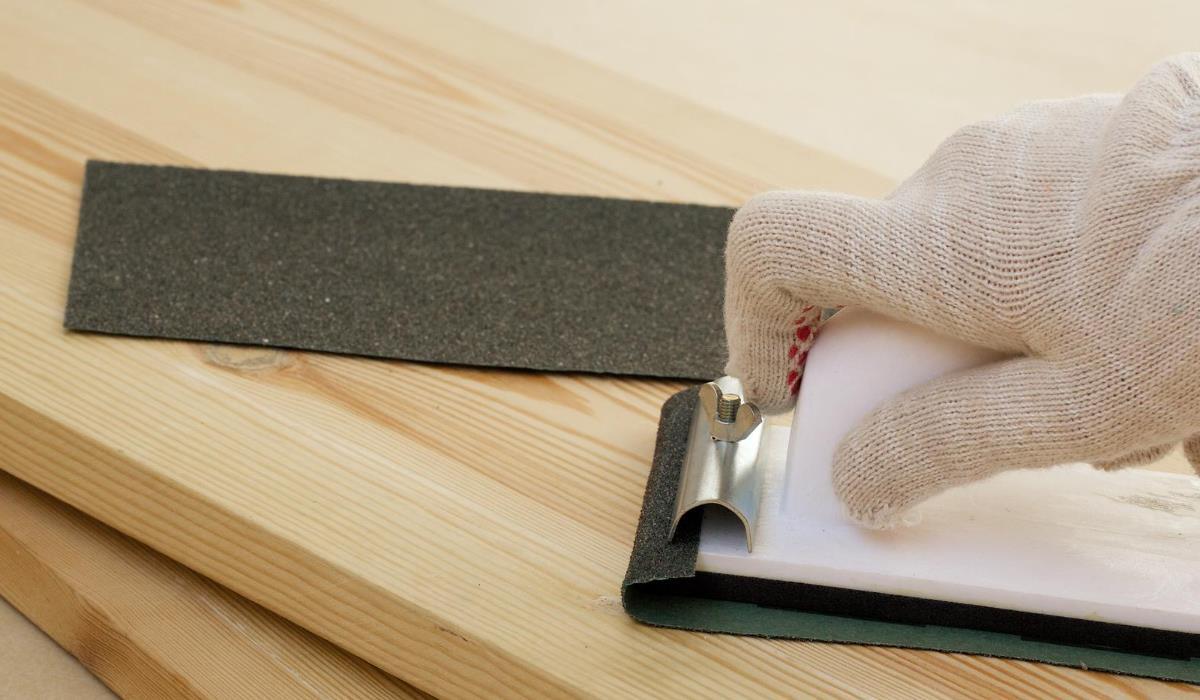Choosing the right grades of sandpaper is key to getting the right finish on your project. We explain the different categories and granules and what they are good for. When it comes to sanding, you need to know what grades of sandpaper to choose to get the finish you want. You don’t want to use coarse sandpaper for a job that requires fine paper, but most mistakes are fixable – it’s just going to take more work.
In principle, there is a suitable category of sandpaper for various DIY tasks. For example, if you have a painting job to do that requires a lot of paint to be removed, you should start with coarse or even extra coarse sandpaper. But if you’re preparing the walls for painting, you’ll probably need to use fine sandpaper to get a beautiful smooth finish.
Sandpaper categories and grains. What is the difference?
Sandpaper is divided into categories such as fine, coarse and medium, and each of these categories contains different levels which are referred to as grit. For example, medium quality paper usually contains 60-100 grit. Rough paper typically contains up to 60 grit. At the other end of the scale, we have very fine paper, which is 240 grit and higher.
What are the different categories of sandpaper?
Sandpaper is divided into five different categories, from very fine to very coarse. These categories are defined as very fine, fine, medium, coarse and very coarse. Within each of these categories, there are multiple grits that give you more control over your finish when sanding. But in fact, for everyday DIY projects like painting a doorframe or the like, you don’t have to worry too much about what grit you should use – the category is enough.
Coarse paper

This type includes 40 or 50 grit paper and is ideal for removing the top layer of paint and varnish. Its coarse grain finish allows the finish to be removed relatively quickly, like paint, leaving the surface ready for further sanding.
Medium grit paper
The grit range is 60-100 and is typically used for coarse cut wood that requires quick removal of splinters etc. It is often the first choice for old, untreated wood, such as doors and door frames that need to be sanded down before painting. It is also a good choice for windows, doors, plinths where there are many layers of paint, especially badly applied paint.
Fine grain paper
It ranges from grit 120 to 220 and is one of the most commonly used types in home DIY projects. In painting projects, grit 120-180 is often used to sand previously painted surfaces. This allows you to get rid of minor imperfections and prepares the surface for a well-adhering new coat of paint. It is also used to smooth untreated wood before applying the first coat of paint or varnish. It is also common when sanding painted walls, smoothing plaster and finishing grout to match the surface.
Very fine grained paper

It has a grit of 240 and higher. The most commonly used grit by DIYers is 240, which is used between coats to smooth the previous coat of paint, preparing it for the next coat, resulting in a smooth finish. Higher grits such as 320 allow for an even finer finish between coats. Grits above 320, such as 400 to 600, are typically used to produce a very smooth wood finish ready for waxing or polishing. They can also be used for smoothing the top layer of paint and for wet sanding.
Very coarse paper
This type is below the coarse paper and includes 24 and 36 grit. It is used for jobs where it is necessary to remove a large amount of paint or varnish. It is often used for rough wooden surfaces that need to be smoothed, and for the first sanding when sanding floorboards.
What does the letter ‘P’ mean in the grit of the sandpaper?
Abrasive paper grit in the UK and Europe is classified by FEPA (Federation of European Abrasives Manufacturers). On the back of the sheet of sandpaper is marked with the letter P, for example, P180, P60, P240. The scale is based on the diameter of the average grain size in microns.



